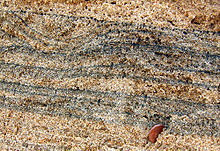- Series:Humans, Transcript English
Romans 7:6
“But now we are delivered from the law, that being dead wherein we were held; that we should serve in newness of spirit, and not [in] the oldness of the letter.”
Do you know that you have something in your head besides bone, soft tissue and blood? You have rocks in your head! Well, sort of, anyway.
Scientists recently announced that they have discovered that the human brain is laced with tiny magnetic particles made of magnetite. Magnetite is the same mineral that occurs naturally in lodestones. While the particles are  distributed throughout the brain, they seem to be more concentrated in the membrane that encloses the brain. Scientists said that they had not seen the particles before because they are so tiny. The smallest are about a millionth of an inch in diameter, while the largest are a hundred-thousandth of an inch in diameter. Added together, all the particles in the average brain amount to only one millionth of an ounce.
distributed throughout the brain, they seem to be more concentrated in the membrane that encloses the brain. Scientists said that they had not seen the particles before because they are so tiny. The smallest are about a millionth of an inch in diameter, while the largest are a hundred-thousandth of an inch in diameter. Added together, all the particles in the average brain amount to only one millionth of an ounce.
The particles are identical to those found in many bacteria, pigeons, salmon and whales. The particles help those creatures navigate, using the earth’s magnetic field. Scientists are not prepared to say that they serve the same purpose in humans. Instead, they continue to study the particles to learn what purpose they serve.
At the time of the creation, the earth’s magnetic field was several times stronger than it is today. When Christ walked this earth, the magnetic field was twice as strong as it is today. Perhaps in that stronger magnetic field, human beings were easily able to keep track of their direction, something few people can do today.
Prayer:
I thank You, Lord, for all of the talents and abilities You have given me. Forgive me for those times when I have thought that I had few talents or abilities with which to serve You. Help me to make better use of Your gifts in Your service. Amen.
Notes:
Thomas H. Maugn II. 1992. “Homing Device found in Human Brains.” The Beacon Journal, May 12, p. A5. Photo: Magnetite and other minerals in quartz beach sand. Courtesy of Mark A. Wilson (Department of Geology, The College of Wooster).
